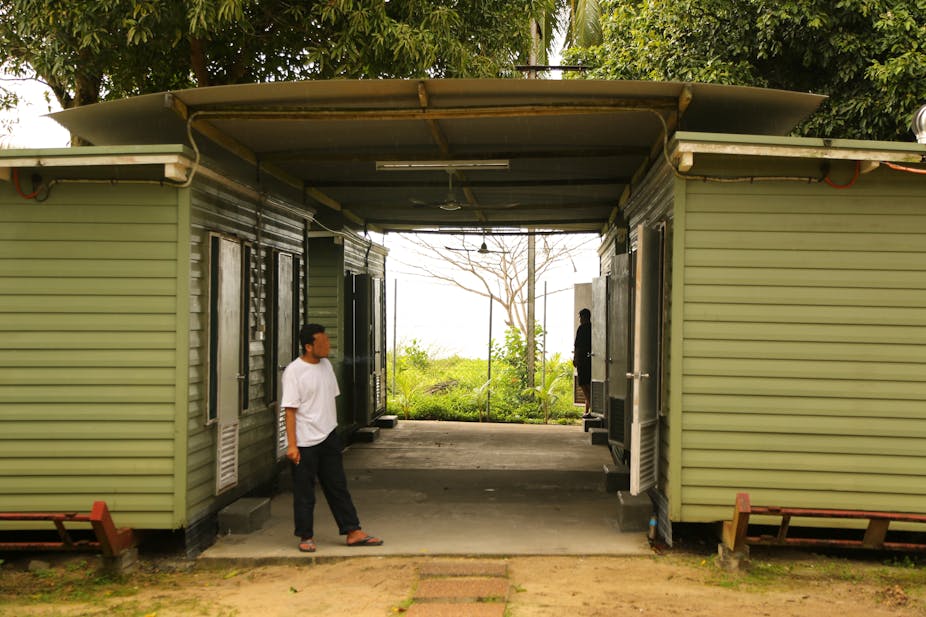Defining “success” in refugee protection can be a tricky proposition. It could be a reduction in the number of people displaced worldwide, places made available for refugee resettlement or the number of countries that have signed the Refugee Convention.
One thing is for certain: the recent riots on Manus Island that led to the death of one asylum seeker and injuries to more than 70 others highlight the failure of Australia’s current response to refugees. That one more person has died trying to find safety in Australia is a tragedy that we must learn from to ensure a better situation for asylum seekers and refugees.
The practice of outsourcing responsibility for refugees is the first issue requiring critical attention. Over several decades, this approach has gone from being the rare exception to common practice. Detention centres are being managed by private companies and agreements made with neighbouring countries to host asylum seekers.
Yet what has happened on Manus Island highlights that Australia cannot avoid its protection obligations towards asylum seekers, irrespective of any number of commercial in-confidence agreements and bilateral partnerships. Immigration minister Scott Morrison still has to answer questions about processing arrangements on Manus Island and must ensure an appropriate review of the situation which could include suspension of current transfers.
For too long, Australia’s policies towards asylum seekers arriving offshore have been guided primarily by security considerations. This was never the intended spirit of the Refugee Convention, founded as it was on the need to protect asylum seekers and provide them with guarantees of safety and asylum.
Current protection measures in most Western developed countries include mechanisms for assessing people’s asylum claims in the territory where they arrived, offering them permanent protection if they are found to be refugees and, making sure return is safe and dignified if a person’s claim is not upheld.
Measures to increase the number of barriers for people fleeing persecution, such as increased patrols and the threat or otherwise of boats being pushed back, has led to deaths and stopped people in genuine need from reaching Australia. Taken from any perspective this cannot be lauded as a “success”.
Re-orienting Australia’s refugee program towards one that is centred on protection would also reduce the mental health anguish faced by asylum seekers and levels of self-harm currently found in detention centres.
It was alarming to hear Morrison refer to “transferees” in his press conference and see this phrase repeated in the media. The use of dehumanising language that reduces a person to a label is part of wider practice of bureaucratic speech that has crept in to refugee debates in Australia.
Think of the words we now hear frequently when referring to asylum seekers and refugees. Detainees is a commonly used one, more often associated with prisons than with refugees in need of protection. Worse still are illegals, Irregular Maritime Arrivals (IMAs) or SIEV (Suspected Illegal Entry Vessel).

Behind all these labels and acronyms are people, with tales of persecution, stories of loss and claims for asylum. It serves no-one, except a government trying to further distance concerned citizens from asylum seekers, to continually employ such labels and dehumanise asylum seekers.
This practice, that reduces any humanity from the label “refugee”, also risks jeopardising Australia’s refugee resettlement program and the support given to assist refugees to integrate into Australian society. How is a person meant to distinguish between a “good” refugee or “bad” IMA? Where is the space for refugee stories to be told that break through these hardened stereotypes and tired, inaccurate labels?
Refugee protection goes beyond a legal obligation to asylum seekers and refugees. It also requires an enabling environment that supports the rights of refugees and does not foster prejudice or discrimination towards them. Ensuring appropriate language and accurate terminology is another important component making up a refugee protection regime.
The challenge of hosting asylum seekers and refugees is being felt worldwide at present. From countries like Pakistan which host over a million Afghan refugees, to Lebanon, Jordan, Iraq and Turkey which are struggling to respond to the outpouring of Syrian refugees, with 1.3 million people leaving Syria in the first half of 2013 alone. In all these places, refugee protection comprises a mix of responses, policy measures and legal mechanisms.
Refugee protection should be judged by its ability to provide asylum seekers and refugees with the rights to which they are entitled, bearing in mind considerations of national sovereignty. Given the recent events on Manus Island, Australia needs to take a hard look at what constitutes refugee “protection” and urgently re-think the principles that inform its asylum seeker and refugee policies.

